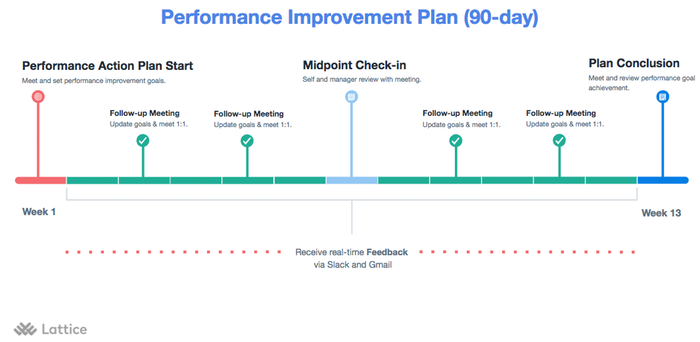A Performance Improvement Plan (PIP) is a formal document designed to help employees who are underperforming. It outlines specific areas where improvement is needed, sets measurable goals, and provides a timeline for achieving these objectives. The primary goal of a PIP is to provide a structured framework for employees to enhance their performance and align their output with company standards.
Why Use a Performance Improvement Plan?
1. Clarifying Expectations
A PIP sets clear, achievable goals for employees, ensuring they understand what is expected of them. It serves as a motivational tool by demonstrating that the company values their contribution and is committed to their success.
2. Enhancing Skills
By identifying specific areas for improvement, a PIP helps employees develop the skills and abilities needed to meet their job requirements.
3. Preparing for Promotions
For employees nearing a promotion, a PIP can outline the additional skills and achievements required to advance to the next level.
4. Performance Documentation
A PIP provides a documented process that can be referred to in future evaluations, ensuring clarity and accountability for both the employee and employer.
When to Use a Performance Improvement Plan
- Consistent Underperformance: Address ongoing issues with work quality or failure to meet job standards.
- Behavioral Issues: Outline necessary changes in professionalism, teamwork, or adherence to company policies.
- Missed Deadlines and Productivity Concerns: Set specific benchmarks to improve time management and productivity.
- Pre-Termination Step: Serve as a final effort to help the employee meet standards before considering termination.

Image Source: lattice.com
How to Create a Performance Improvement Plan
1. Identify Specific Performance Issues
Begin by clearly identifying the areas where the employee's performance is lacking. Use specific examples to illustrate the problems, ensuring the feedback is clear and actionable.
2. Specify Measurable Objectives
Set clear, quantifiable goals using the SMART criteria (Specific, Measurable, Achievable, Relevant, Time-bound). This helps the employee understand exactly what is expected and how their success will be measured.
3. Detail the Action Plan
Outline the steps the employee needs to take to improve. This should include any training sessions, resources, or support from management necessary to achieve the goals.
4. Set Clear Performance Standards
Define what constitutes acceptable performance. This eliminates ambiguity and sets a clear benchmark for the employee to aim for.
5. Define the Review Period
Establish a timeline for the PIP, typically 30, 60, or 90 days, allowing sufficient time for improvement while maintaining a sense of urgency.
6. Discuss Potential Outcomes
Communicate the consequences of not meeting the PIP objectives, as well as the positive outcomes of successful completion. This may include potential disciplinary action or rewards and recognition for improvement.
7. Regular Check-Ins
Schedule regular meetings to discuss progress, provide feedback, and make any necessary adjustments to the plan. Consistent communication ensures that the employee remains focused and motivated.
8. Documentation and Signatures
Document the entire PIP process and have both the manager and employee sign the document to acknowledge their understanding and commitment to the plan.
Conclusion
A well-structured Performance Improvement Plan is a valuable tool for helping employees meet their potential and align their performance with company standards. By setting clear expectations, upgrade recruitment process, providing necessary support, and maintaining consistent communication, a PIP can transform performance issues into opportunities for growth and development.




























